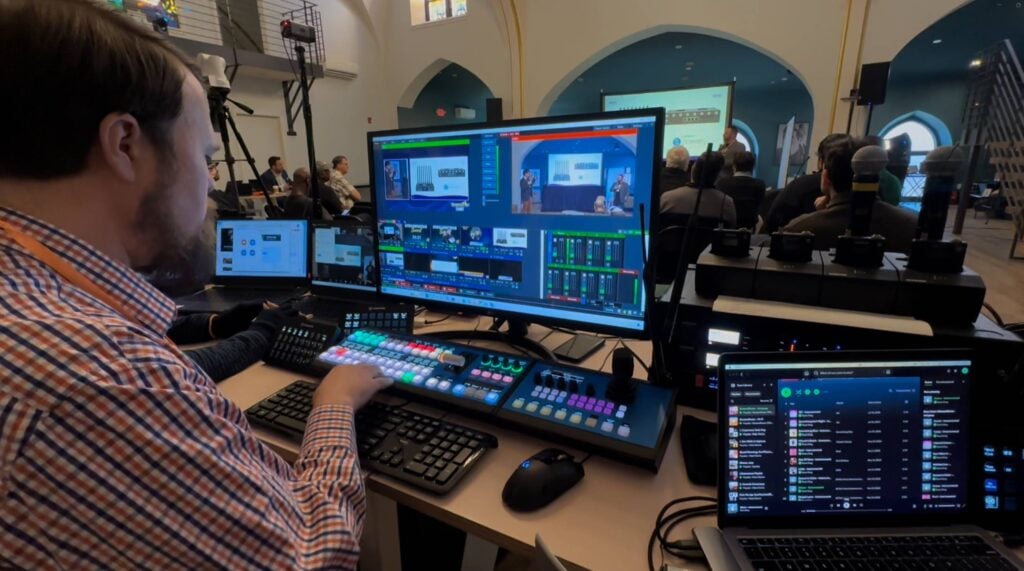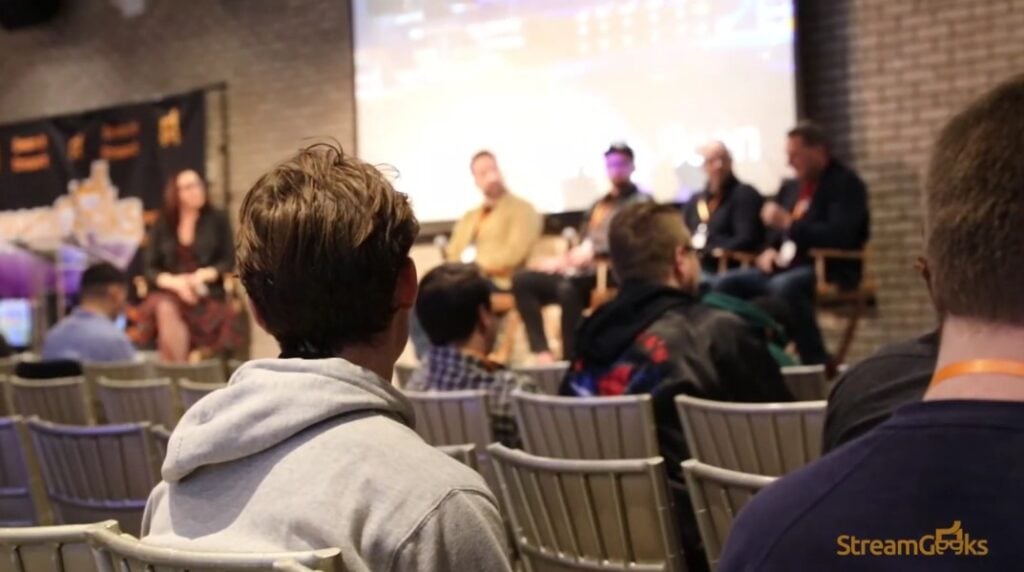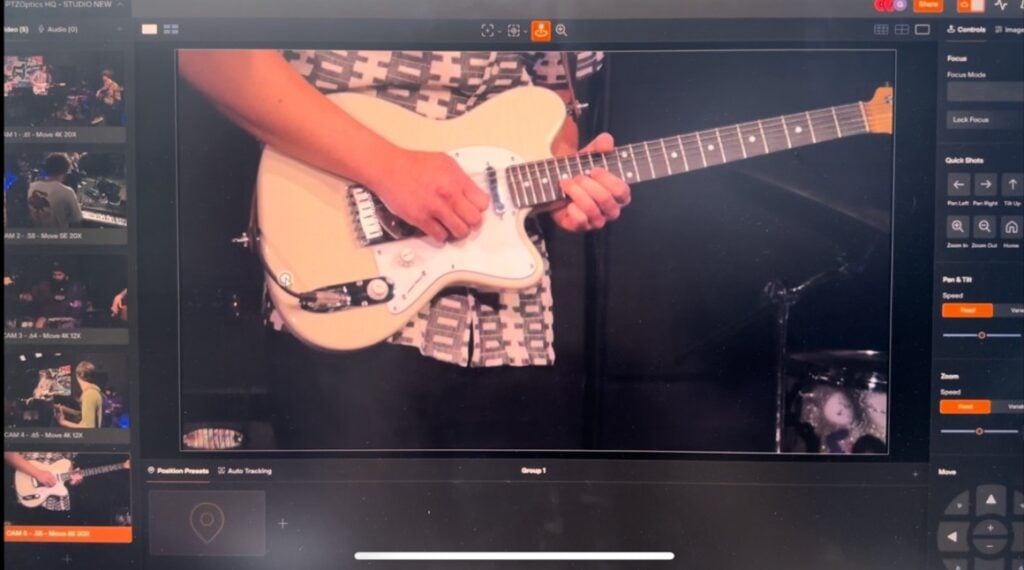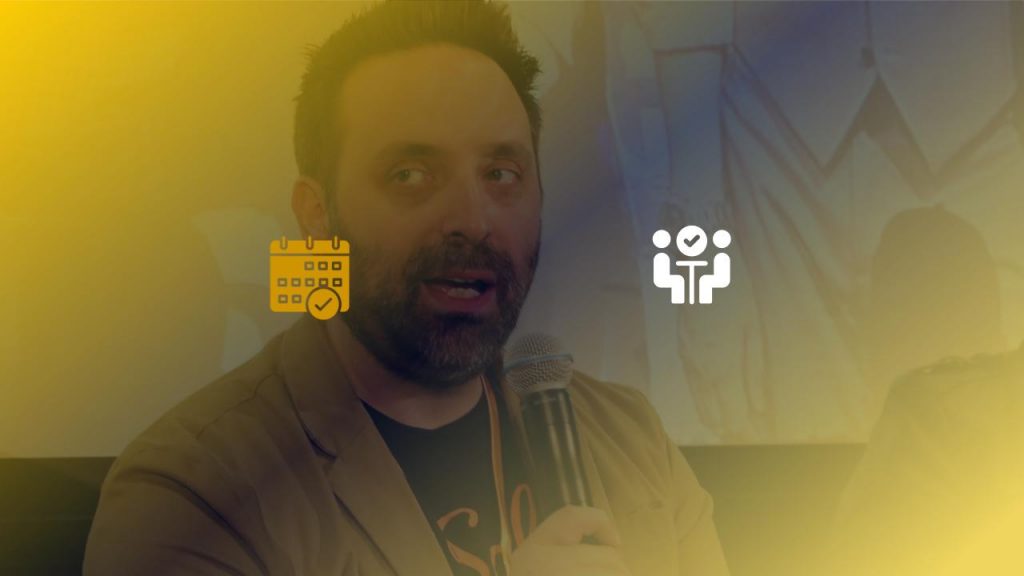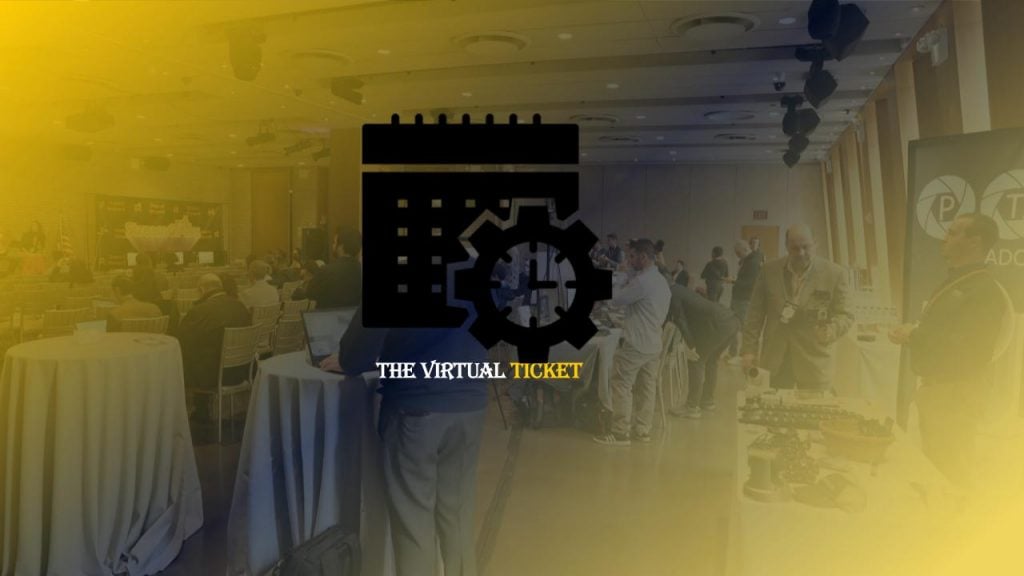Virtual Ticket Pricing Strategy
Written by Paul Richards on March 21, 2020
Basic economics tells us that a perfect product price does exist. The perfect price is found when supply and demand meet in a place economists call the “equilibrium.” For an event, this would mean that you sell out of all your tickets and your price was high enough that you did not undercut any potential profits. Observing the law of supply and demand, in-person and virtual tickets have one fundamental difference. In-person tickets have a limited supply and virtual tickets have an unlimited supply.
Each ticket type will have its own “price elasticity” which describes the product’s responsiveness to changes in price. A prime example of this would be to look at a change of in-person ticket prices versus a change of the price for virtual tickets. Because in-person tickets have a limited supply, you can assume that this will drive up prices. You can also assume that the limited supply will make consumers less sensitive to price changes for this product.
How to Maximize Profits
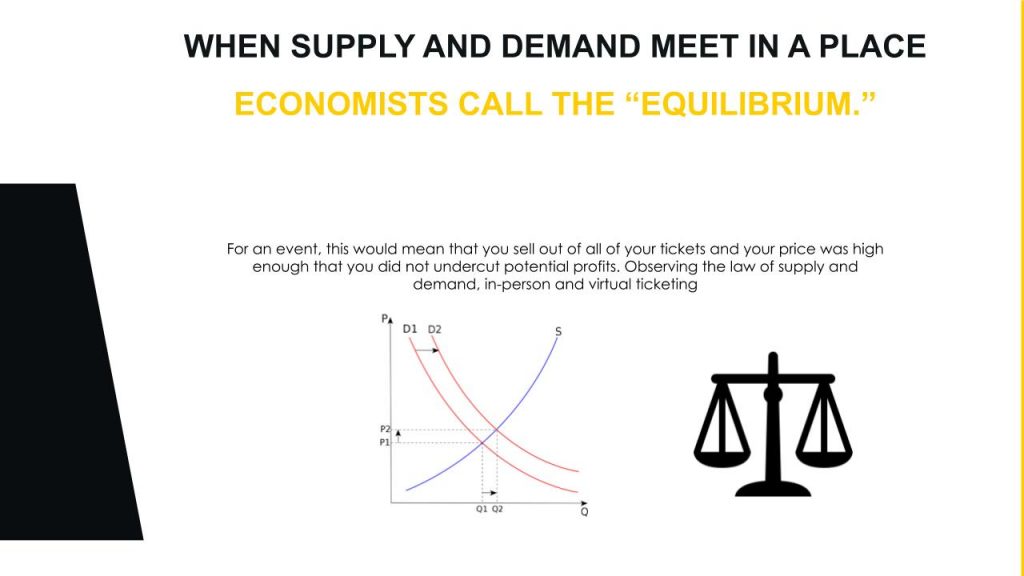
How to Maximize Virtual Ticket Profits
Increased profits can be achieved when ticket price and demand rise together. If the ticket prices are too high, demand for the product will go down. The goal for ticket pricing is to reach an equilibrium between price and demand. Products that are inelastic do not have customer demand that changes based on price. An example of an inelastic product would be a medicine that is needed for survival. Products that are elastic can feature large changes in consumer demand based on price. Elastic products generally not unique and have substitutes available for consumers to choose that are less expensive.
Even though virtual tickets have an unlimited supply, suppliers still must find the perfect price to reach equilibrium and therefore maximize profits. To do this consider the highest price you can charge to the largest set of potential customers. Virtual tickets have cost and therefore supply does not have to be unlimited. As you can see from the example table below, a perfect price for in-person tickets is $50. The perfect price for virtual tickets is $5. If the tickets are priced higher or lower than these equilibrium prices there is a loss in revenue.
| Ticket Type | Price | Quantity | Revenue |
| In-Person | $100 | 100 | $10,000 |
| In-Person | $50 | 500 | $25,000 |
| In-Person | $10 | 1,000 | $10,000 |
| Virtual | $10 | 1,000 | $10,000 |
| Virtual | $5 | 5,000 | $25,000 |
| Virtual | $1 | 10,000 | $10,000 |
Tiered Levels for Tickets
Most events use a tiered ticket-pricing structure which can easily be integrated into a virtual ticket pricing strategy. Event managers often use pricing mechanisms, such as early sign-ups, referrals and group purchases to increase demand without reducing the value of a ticket. By using incentives, you can reach a wider range of customers by reducing prices temporarily.
Tier One Ticket: Free
The first ticket tier you should have for virtual access to the event is FREE! Although this might sound counterintuitive, it makes sense from a business point of view. By allowing users to watch a limited amount of content such as the first few minutes or hours of your event for free on social media, you will be giving interested viewers a no-risk opportunity to try out your product before they commit to paying for it. This is a great way to win over potential customers who are still hesitant about buying a virtual ticket. In addition to giving people a try-before-you-buy option, offering a portion of your content free allows it to be shared widely, which will greatly expand your reach and makes it possible for even more people to sign-up for the event. Furthermore, you can offer limited free access to both the virtual tickets and on-demand access to your library of content after the event. In this way, you can create a great free lead capture system with content you already have. Free tickets are a great way to capture leads before people are ready to buy. Offer free limited admission virtual tickets at the bottom of your landing page to capture folks who haven’t already purchased. A free basic ticket could have limited access to a pre-show and include advertising to encourage premium ticket sales.
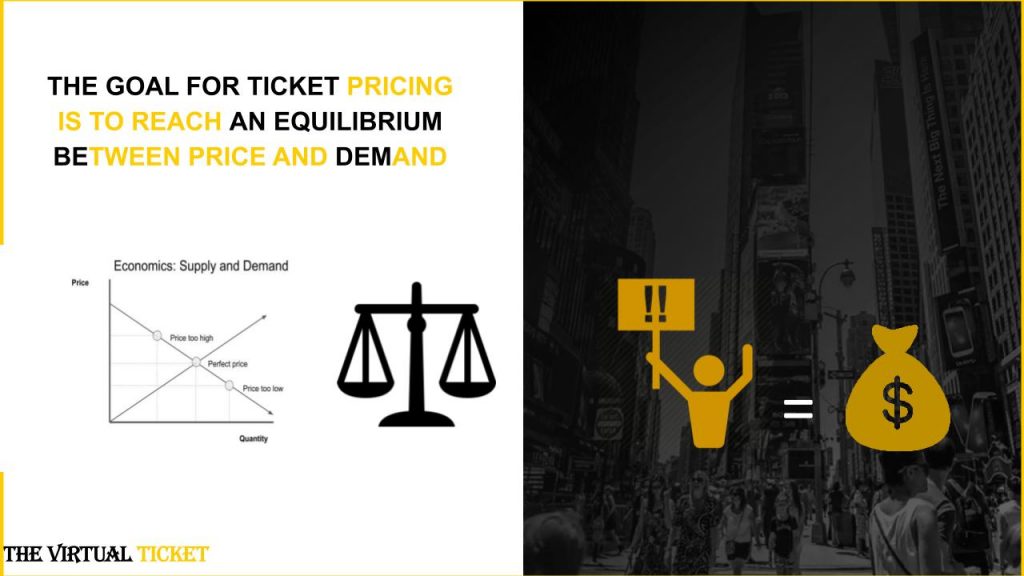
Supply and demand for ticket sales
Ticket Pricing Options
There are three primary levels of access to an event that you can offer customers (“Private Live Streaming & Selling Virtual Tickets,” n.d.).
- In-Person Access: This carries the highest level of urgency since it is not only time-bound, but the venue also has a limited number of people it can contain. Additionally, it offers the greatest number of benefits because in-person attendees will gain access to the content of the event, as well as direct access to other people who will be present at the venue. To maximize in-person sales, it is recommended that this tier be divided further. Suggested subdivisions are:
- VIP access (which may offer exclusive access to conference speakers and organizers) as well as all the other benefits enjoyed by ticket holders.
- Ticket bundles may include access to the on-demand content at lower rates and other benefits (Group Discounts).
- General admission offers straightforward access to the event without any perks.
- Virtual Tickets: Virtual tickets also carry an element of urgency, but to a lesser degree than in-person tickets. That is because there is no limit to the number of people who can purchase virtual tickets. You can increase the value of virtual tickets by limiting supply. You can do this without affecting sales if the number is more than you expect to sell.
- Virtual access bundled with on-demand access (offers on-demand access at a lower rate).
- Virtual access without on-demand access.
- Virtual access bundled with some type of VIP behind the scenes access or interview. This type of virtual ticket should always have a limited supply.
- On-Demand Access: This is the least urgent category of access. However, for events that take place in many rooms simultaneously, on-demand access to the event’s library is almost inescapable for most attendees. This is a great option for professional teams that want to review the content later on in the year.
Other Monetization Options
- Additional Paywall Option: In addition to the Par-Per-View model already discussed where users pay for a one-time access to your content, there is also the subscription model. This model works best if you create new content that your audience pays for continuous access to. This can also work for on-demand access to your library of premium videos. A subscription is always better than a one-time ticket sale. You can consider offering discounts for subscriptions which essentially give the audience access to all of your events and/or premium video collection on a monthly or yearly basis (“4 Ridiculously Easy Ways to Generate Revenue with Live Video,” 2018).
- Sponsorship and Advertising: This is another route to go, but it is only possible if you have enough viewers on your platform to make it attractive to potential advertisers. Ideally, most advertisers want platforms that have hundreds of thousands of viewers. Large numbers afford them greater exposure. Primary content sponsors may be satisfied with smaller numbers of highly qualified contacts. Most premium CDN services allow you to pay advertisements during your live stream which include analytics you can provide your sponsors.
Your Event Pricing Strategy
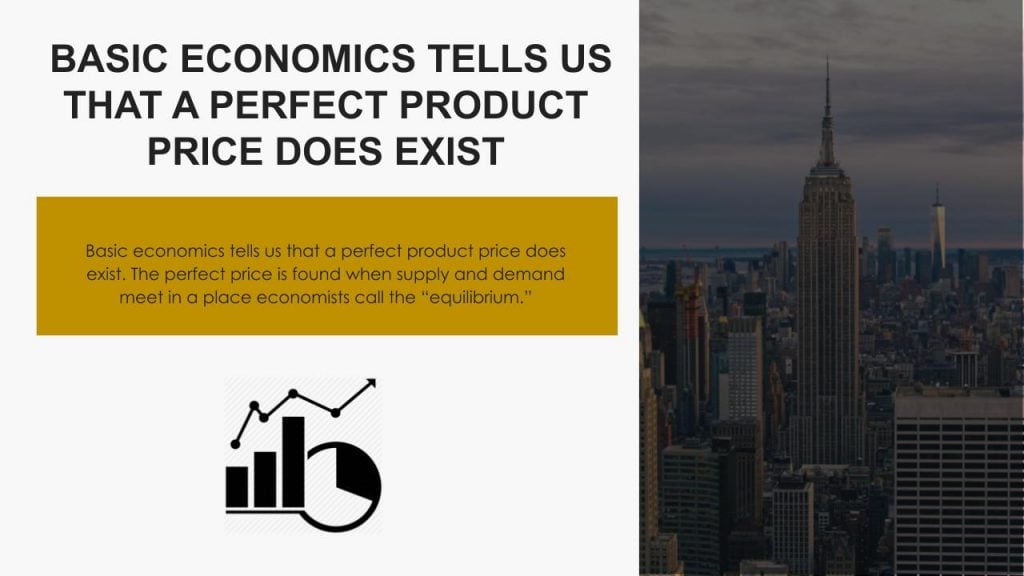
Virtual Ticket Pricing Strategy
The way that you structure pricing for in-person and virtual tickets helps to ensure maximum profitability for your event. Therefore, each ticket type should be made attractive to a specific kind of customer and open up attendee choices to wider audiences (Team, 2019).
- People who buy virtual tickets may never attend the event in-person even if it is the only option. This is because they have real constraints which prevent them from being at the event. Modern consumers lead busy lives and for some convenience is king.
- On the other hand, attendees who prefer to be physically present at the event may not appreciate a virtual ticket, since it denies them the other benefits of being at an event in-person. You can use this to your advantage by giving in-person ticket buyers a virtual ticket to give to a friend.
- Virtual tickets can also be used as an upsell to promote physical attendance. If you price your virtual ticket very low, you will sell more. You may decide that your goal is to increase overall exposure and make the event completely free on social media. Either way, the increased exposure for your event may be used to promote in-person ticket sales long term. Viral referrals can be used to give coupons or discounts to anyone who shares the event online.
- The video footage from your live stream can be posted on social media before, during and after the event to help promote sales. Before your event starts you can create a live stream of the “pre-show” on Facebook and/or YouTube to promote virtual ticket sales with a count-down timer. During the event there are ways to easily post snippets of your event to social media. These short snippets can be set up to have a link directly to the buy page for your virtual tickets. There is a great Dropbox integration with Zapier that can be used to automatically post any videos created in a specific folder to social media. In this way, you can have a special folder that automatically posts video recordings to social media websites with custom messages and a link back to your website. After the event you can post entire segments or clips of the event to promote long term ticket sales for your next event.
-
- Existing customers could qualify for legacy pricing with a special coupon code. Many events suffer from the law of diminishing returns where attendees continue to get less and less out of the experiences they have already had in the past. In this case, you can continue to lower your price for repeat customers with discounts or lure them back with a fresh new virtual experience. A virtual ticket’s value inconvenience and price may be enough to bring back old customers who would not have otherwise purchased a ticket.
- Watch parties are a new feature used by Facebook to describe a group of friends watching a video together online. Anyone can host a watch party, invite their friends, and chat about the video in real time. Virtual ticket experiences can also be set up like this for groups of friends located around the world. Virtual ticket experiences can be set up in offices and home theaters for groups of friends. As a marketer selling virtual tickets, the idea of a watch party could powerfully explain the value of a virtual ticket to buyers. This is the type of marketing done by the NFL for the Super Bowl. Over 100 million people tuned in to the 2020 Superbowl live broadcast. This event takes the idea of watch parties to the next level. Over 1.4 billion chicken wings were consumed, and 162 million pounds of avocados were mashed into guacamole. That’s a whole lot of watch parties going on to support those record-breaking numbers in 2020.
Virtual tickets will not shrink your audience. Consider your total addressable audience in the pie chart above. In most cases, less than 1% of the total addressable market can attend your event in person. It’s very likely that the other 99% of the audience is willing to pay a small fee to attend your event virtually. Virtual tickets will expand the reach of your event beyond the number of people your venue can accommodate. Instead of a local audience, your event is now open to the world. At the same you are creating an additional revenue stream you can use to make the event more profitable (“Selling Event Virtual Tickets and Private Live Streams,” 2017).
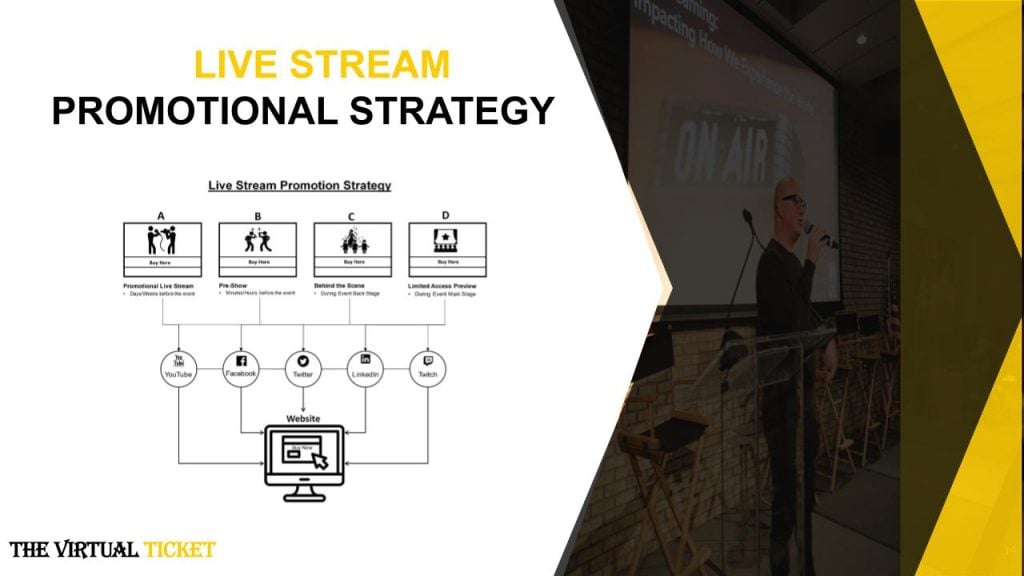
-
Categories of Virtual Access
Virtual access to an event can be real-time or post-event.
- Real-Time Access happens as the event unfolds at the venue. Real-time tickets holders join those attending the event in-person and are part of the action as it happens. This is the most exciting way to deliver access to your virtual ticket holders. This approach also requires a live video production system and a team to run it.
- On-Demand Access happens after the event. This is generally access to a library of event videos and premium digital assets. The experience is non-interactive but valuable, nonetheless. Attendees who paid for in-person access and real-time access often buy on-demand access as well.
- Premiere Access is a new style of releasing recorded videos for large audiences. YouTube, Facebook, and Twitch all feature video premiers that allow you to upload a video to be released at a certain time and date. The premiere feature includes a countdown timer and chat room for the live viewers to participate in. Premieres are a great way to release new snippets about your event in an exciting way. If you plan to upload your video anyway, why not build up some excitement with a premiere release? When your video is about to premiere, you should consider sending an email out to let people know about the premiere. A video premiere can perform very well on social media because it alerts many of your followers organically and can spread via social media quickly. By sending as many people to the premiere as possible, you can jumpstart your videos organic growth on social media. You can consider creating a custom introduction to your event with a premiere. You can have your in-person audience watch the premiere as well or use it to boost virtual ticket sales right before your event starts.
- Selling event tickets is the main source of revenue for many events. Whether or not you intend to charge a fee for your event, it’s important to set a value on the tickets with some price. Expanding the ability for your event to generate income with virtual tickets, breaks out of the limits imposed by the size of the event venue and your location. There may be thousands of people who would like to attend the event but are unable to due to work, distance, or other reasons. There is no reason why they cannot participate in your event. By live streaming your event and offering virtual tickets to it, you increase your reach to a global audience. If this is your first event with virtual tickets, consider keeping the cost low. At this point your audience doesn’t know what to expect and you haven’t set any precedent. If you have events all the time, consider live streaming a few events for free to let the audience know what they can expect. If you only have one big day to live stream your event, make sure you know what you are doing. As you learn how to engage your online audience and successfully implement some of the strategies you will learn in this book, you can increase your value and increase your price.
- You may also choose not to charge an entrance fee if you have other ways of making money from the event, like sponsorships and advertising. For those who need to charge a gate-fee, what are the available options for maximizing your profits? (“How To Promote An Event,” n.d.).
- Make Tickets Easy to Buy: Use event-ticketing platforms such as Eventbrite to expand your reach and have a big bright “Register Now” button on your website. On your social media pages and posts ensure you have a “Get Tickets” button and a similar “Call-To-Action” (CTA) on every post, article and email (31 Best Ways to Sell Tickets for Your Event, 2019)
Learn more on Monetizing Live Streaming
- Get your free copy of the Virtual Ticket here.
- Take an online course on hosting private live streams here.
- Learn what virtual tickets mean for the events industry here.
- How to monetize your next live event - here
- How to accept donations on your Facebook and YouTube live streams - here
- Selling Event Virtual Tickets and Private Live Streams - here
- Viewer Statistics for live streaming – here
- Here’s why Twitch is such a BIG opportunity for live streamers - here
- Did you know your town may have a Business Improvement District? They may help your set up a live stream! More here
- Selling Virtual Tickets with Event Planner Derral Eves - more here
- Learn about three events that are already selling virtual tickets here.
- A look at the technology needed to host private live streams here.
- A look at planning a virtual event here.
- Review your virtual ticket pricing strategy here.
- Preparing your event for live streaming here.
- Learn how to build your event live streaming team here.
